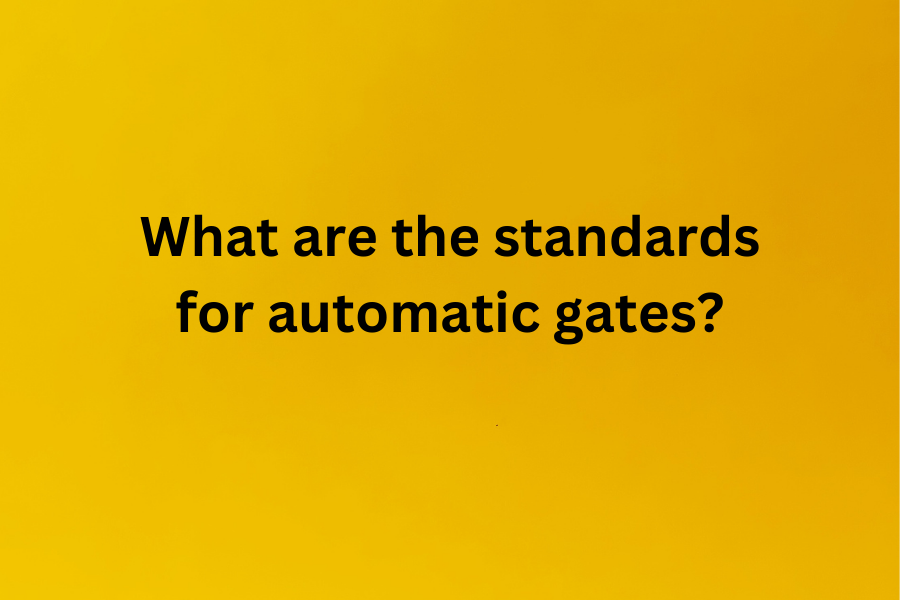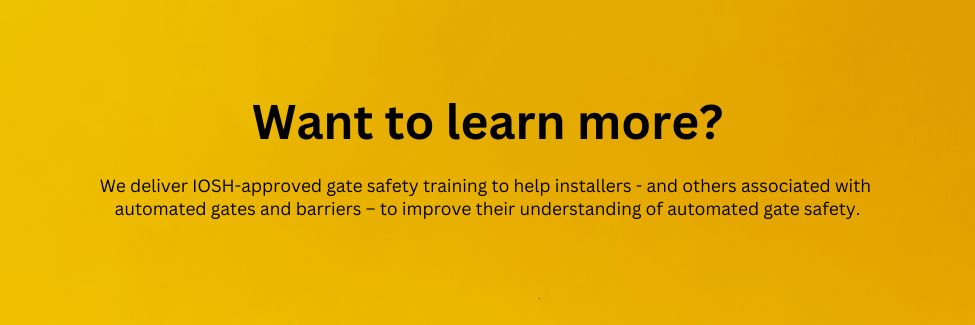Understanding the British Standards for Automated Gates
What are the standards?
While these standards provide a solid foundation, it is imperative to recognise that adherence to them alone will not meet all the mandatory Essential Health and Safety Requirements (EHSRs) of the Supply of Machinery (Safety) Regulations 2008.
| BS EN 13241 – 1:2003 | Specifies the safety and performance requirements for doors, gates and barriers, intended for installation in areas in the reach of persons, and for which the main intended uses are giving safe access for goods and vehicles accompanied or driven by persons in industrial, commercial or residential premises. |
| BS EN 12453:2017 | Industrial, commercial and garage doors and gates. Safety in use of power operated doors. Requirements and test methods This shows the importance of the gate support structure for manual and automated gates, if the pier / post is not fit for purpose this type of accident is inevitable. |
| BS EN 12604:2017+A1:2020 | Industrial, commercial and garage doors and gates. Mechanical aspects. Requirements and test methods |
| ISO 13857:2019 | Safety of machinery Safety distances to prevent hazard zones being reached by upper and lower limbs |
| BS EN 12978:2003+A1:2009 | Industrial, commercial and garage doors and gates. Safety devices for power operated doors and gates. Requirements and test methods |
| BS EN ISO 13854:2019 | Safety of machinery. Minimum gaps to avoid crushing of parts of the human body |
If the explanation of what the standards are covering doesn’t make sense you are not on your own, the Gate Safe training deals with the issues in plain English.
Automated gates are not one-size-fits-all solutions when it comes to safety. Each powered gate must be approached on an individual basis, considering specific designs and potential risks. To achieve this, adopting a risk assessment approach is vital. This approach ensures that safety is not merely a checklist but a thoughtful and thorough, risk-by-risk consideration.
The Role of Expertise
In navigating the landscape of automated gate safety, expertise plays a pivotal role. Industry professionals equipped with the right knowledge can identify potential risks, design tailored solutions, and ensure safe and compliant gates.
The British standards for automated gates serve as the starting point for safety in the industry. However, they are not standalone solutions. Understanding and implementing these standards alongside a holistic, case-specific risk assessment approach, can help deliver safe automatic gates thus preventing unnecessary accidents.
If you are an installer and would like to learn more about the risks and how to mitigate them visit our training page. Alternatively, you can learn about gate safety by visiting our website.

